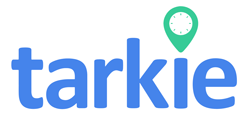Ever thought about how changing attendance data could change your whole workforce strategy? Today’s fast business world makes tracking employee presence more than just a task. It’s about using data to make better decisions, boost productivity, and create a more engaged team. In the Philippines, small and medium businesses can really benefit from this.
They need good attendance tracking systems to get the data they need. This data helps spot trends, predict problems, and take steps to keep the team happy and productive.
Key Takeaways
- Understanding attendance trends is vital for effective workforce management.
- Data-driven insights can significantly boost employee productivity.
- Implementing advanced attendance tracking systems enhances decision-making capabilities.
- A focus on attendance data can foster a culture of employee engagement.
- Proactive strategies based on data can address absenteeism issues more effectively.
The Importance of Attendance Trends in Workforce Management
Understanding attendance trends is key to better workforce management. These trends show how often and when employees are present or absent. This helps companies see how well their teams are doing and how efficient they are.
Looking closely at attendance data can uncover important information. It helps companies know how to deal with employee absences better.
Defining Attendance Trends
Attendance trends include how often, how long, and when employees are away. By studying this, businesses can spot patterns. These patterns might show if there are problems at work or personal issues affecting attendance.
Tools for tracking attendance help companies gather and analyze this data. This way, they can manage their workforce more effectively.
Why Monitoring Attendance Trends Matters
In places like the Philippines, following labor laws is very important. Keeping an eye on attendance trends helps companies stay on track. It lets them spot and fix any issues with employee absence.
Companies using advanced attendance tracking systems see big improvements. They see a drop in unplanned absences by up to 39%. This boost in productivity and job satisfaction is a win-win for everyone.

Leveraging Data-Driven Insights for Enhanced Decision Making
In today’s world, using data-driven insights is key for better decision-making in workforce management. By looking at attendance data, companies can spot trends. These trends help with planning staffing, scheduling, and roles for employees. This approach boosts productivity and makes employees happier.
Small and medium businesses in the Philippines can really benefit from these data-focused strategies.
Understanding Data-Driven Insights
Data-driven insights come from analyzing data, like attendance records. With the right tools, companies can understand their workforce better. They can see issues early and fix them before they get worse.
Companies that use data well are 18% more productive. This helps in making better decisions about who does what and when.
Benefits of Data Usage in Workforce Management
Using data insights helps a lot in managing the workforce. AI and machine learning help predict staffing needs. This makes businesses more flexible and efficient.
Also, companies that make decisions based on data do better. They are three times more likely to see big improvements in their decisions.

Here’s a detailed look at some key benefits of leveraging data in workforce management:
| Benefit | Impact |
|---|---|
| Enhanced Employee Performance | Identifying top performers and training needs to improve overall skills. |
| Reduced Turnover Rates | Identifying at-risk employees can significantly lower turnover, particular in high-turnover industries. |
| Cost Efficiency | Optimizing schedules reduces labor costs while ensuring adequate coverage. |
| Informed Recruitment Processes | Revealing the most effective talent acquisition channels leads to time and resource savings. |
| Operational Agility | Predicting future staffing needs enables effective planning for peak periods and employee turnover. |
Companies that use data insights in their workforce management do better. They become more efficient and have a balanced team. This leads to better performance and happier employees.
For more on how attendance tracking helps in managing the workforce, see this guide on tracking software features.
How Attendance Tracking Systems Transform Workforce Management
Modern attendance tracking systems are key to better workforce management. They offer features that streamline processes and cut down on paperwork. This leads to more efficiency in handling attendance and keeping employees accountable.
Features of Modern Attendance Tracking Systems
These systems have many features for businesses. Some important ones are:
- Automated reporting: It cuts down on mistakes from manual tracking, making payroll more accurate.
- Real-time data: Managers can check attendance right away, solving problems fast.
- Customizable attendance options: They offer solutions that fit each company’s needs.
- Biometric authentication: It stops fake time entries, keeping data trustworthy.
- Integration capabilities: They work well with other software, making operations smoother.
Real-Time Data Collection and Reporting
Collecting data in real-time changes how companies manage their teams. It lets them handle attendance problems quickly, avoiding disruptions. Automated systems can:
- Lower absenteeism by up to 30%, making employees more responsible.
- Save HR 50% of their time by reducing manual work and errors.
- Help follow labor laws better, avoiding fines and legal trouble.
This leads to happier employees, with up to a 40% boost in satisfaction. Using advanced tools like Jibble makes tracking time clear and fair for everyone.
![]()
Identifying Attendance Trends: Patterns and Insights
Understanding attendance trends is key for a better work environment. By analyzing attendance data, companies can see patterns. This helps spot issues like burnout or personal challenges that affect employee engagement.
Spotting Individual Employee Absenteeism Patterns
Watching individual attendance helps employers find specific problems. For example, if someone often misses Mondays or Fridays, it might mean they’re not engaged. Fixing these issues early can boost morale and productivity. An in-depthanalysis of attendance helps tailor support, improving overall engagement.
Company-Wide Insights and Seasonal Trends
Looking at company-wide attendance data reveals seasonal trends. For instance, after big events or holidays, more people might be absent. Knowing these trends helps plan ahead, like hiring temporary staff or adjusting shifts.
This way, businesses can manage their workforce better. It helps avoid disruptions and keeps operations running smoothly.
Attendance Trends, Data-Driven Insights, Workforce Management
Linking attendance data to workforce efficiency is key for better performance. Looking at attendance patterns helps improve employee engagement. When employees see how their attendance affects productivity, they feel more responsible and valued.
This makes them more committed to the company’s goals. Such a culture is essential for achieving big business objectives.
Connecting Attendance Data to Workforce Efficiency
Using attendance data helps managers schedule staff better. By having the right number of employees during busy times, costs go down. This also makes operations more efficient.
Accurate scheduling cuts down on overtime and boosts productivity. Matching employees with the right tasks improves their performance. This leads to a more engaged team.
Impact on Employee Engagement and Productivity
Data insights are key to keeping employees engaged. Tools like Business Intelligence dashboards provide real-time data. This data shows how individuals and teams are doing.
It helps spot problems early, like absenteeism or performance issues. This allows for quick fixes. Better engagement means higher productivity, making the whole team more motivated and helping the company’s profits.
| Strategies | Benefits |
|---|---|
| Data-Driven Scheduling | Reduces labor costs and enhances operational efficiency |
| Real-Time Monitoring | Immediate insights into employee performance and engagement |
| Predictive Analytics | Anticipates staffing needs and improves resource allocation |
| Enhanced Training Programs | Address identified gaps in performance, boosting workforce capabilities |
Using these strategies helps manage the workforce better. It creates an environment where employees feel valued and empowered. A well-managed team leads to higher productivity, making the whole organization more successful.

Proactive Management: Using Attendance Data Effectively
Proactive management uses attendance data to improve workforce strategies and employee well-being. It helps reduce absenteeism challenges. In the Philippines, companies can create detailed attendance plans to build a healthier work culture.
By spotting trends in absenteeism, companies can tackle issues early. This approach prevents problems from getting worse.
Creating Attendance Improvement Plans
Creating attendance plans is key to a positive work environment. These plans include specific actions to help employees with attendance issues. For example, offering wellness resources and flexible schedules can improve morale and attendance.
Being proactive in management not only solves absenteeism but also builds a supportive culture. This benefits everyone in the workforce.
Early Interventions for Absenteeism Issues
Early interventions are vital for tackling absenteeism. Companies can use attendance tracking to find patterns like frequent absences. This helps management create custom solutions, like adjusting schedules or offering wellness programs.
By focusing on employee well-being, companies improve their workforce strategies and reduce absenteeism’s impact. Regular checks allow management to quickly adjust and help employees succeed.
Implementing Flexible Policies Based on Attendance Data
Organizations can greatly benefit from flexible policies based on attendance data. These policies meet employee needs, boost productivity, and create a positive work culture. By considering each team member’s unique situation, companies build an inclusive environment. This environment adapts to different job roles and responsibilities.
Customizing Work Policies for Employee Needs
Customizing work policies to fit employee needs is key. This approach helps tackle tardiness and absenteeism more effectively. With real-time tracking, managers can make better decisions, leading to policies that work for everyone.
By linking attendance systems with payroll, businesses make accurate pay calculations easier. This improves the payroll experience for all employees.
Building a Positive Attendance Culture
Creating a positive attendance culture is crucial for employee motivation. Recognizing and rewarding consistent attendance shows appreciation for company policies. Regular checks on attendance data help spot issues early.
Automated reminders for unusual attendance patterns also help. This leads to fewer cases of tardiness and absenteeism.
Tools and Technologies for Tracking Attendance Trends
Choosing the right attendance tracking solutions is key for any organization. These tools, from biometric systems to mobile apps, improve data accuracy and employee accountability. Each system has unique features that help automate processes and cut down on errors.
Choosing the Right Attendance Tracking Solutions
There are many options for attendance tracking solutions. The best one should work well with your HR software. It should offer real-time tracking and automated reports.
Using these solutions can save a lot of time. For example, they can save up to 30% in administrative time. Cloud-based systems also cut down data entry errors by 50%, making attendance management more efficient.
Integrating Attendance Systems with HR Software
Integrating HR software with attendance systems is crucial. This integration can increase payroll accuracy by 25%. It makes payroll processing easier and more accurate.
Businesses that use real-time data and reporting gain valuable insights. This helps in making better decisions. Integrating these systems streamlines operations and boosts productivity.
Conclusion
Understanding attendance trends is key for good workforce management. By using accurate data, companies can improve how they engage and manage their employees. Many workers want to work from home, showing the need for flexible work options.
Investing in employee well-being is also important. It helps create a supportive work environment. Businesses that focus on employee happiness see their profits grow. They also make a workplace that employees are proud to be a part of.
Companies that value attendance data are set for growth. By managing attendance well, businesses in the Philippines can improve their operations. They can stay ahead in a changing business world.
